Content & Usage Report: Users
List all users in your Confluence instance and their actions in a specified date range.
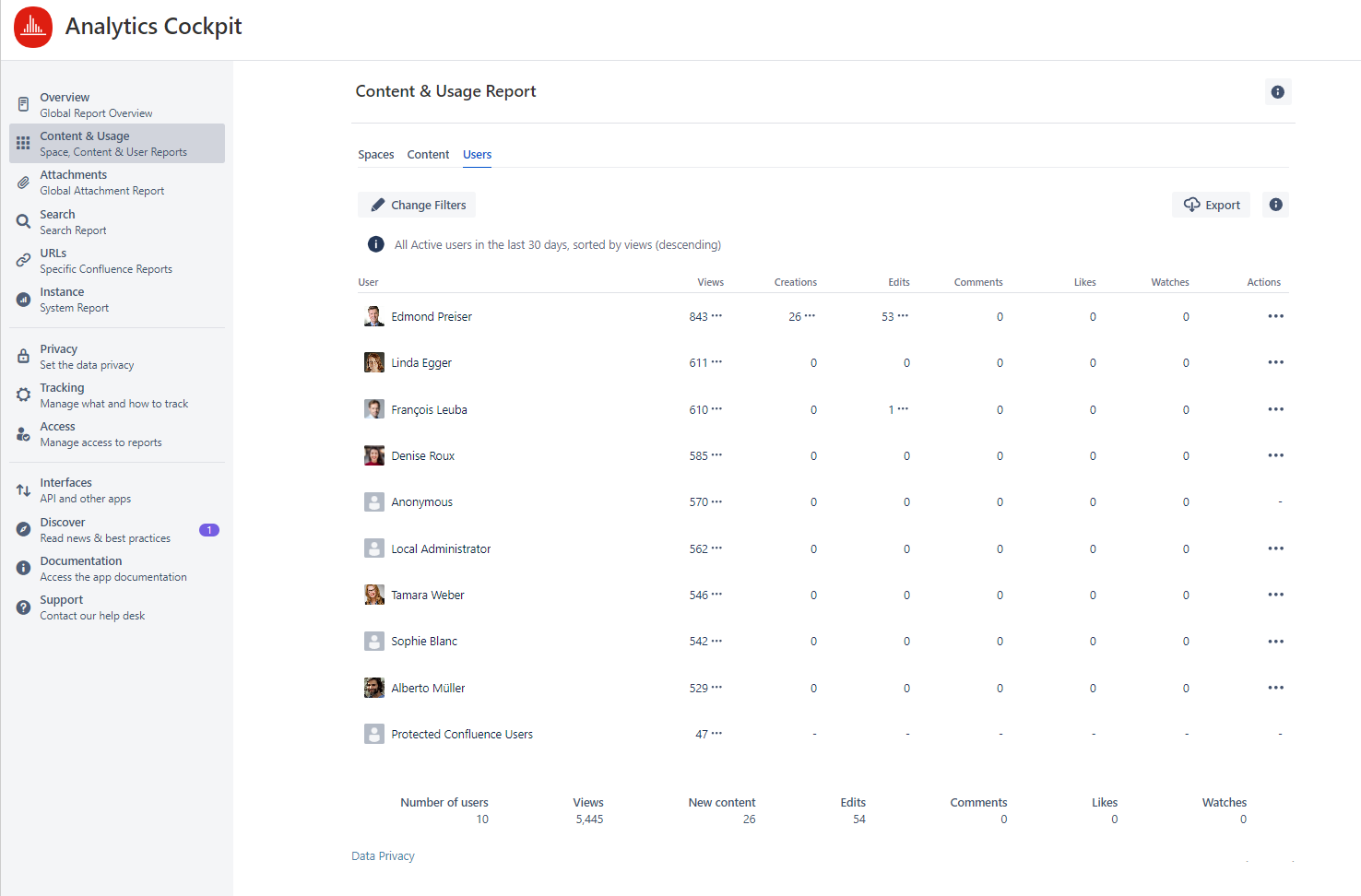
Screenshot of the Content & Usage Report: Users
Accessing the Users Report
This new report is part of the Global Report and the Space Report.
Access the Global report via:
⚙ → Analytics Cockpit (visible to Confluence Administrators only) or
Confluence header → Analytics Cockpit (visible to users who have been granted access)
Select “Content & Usage” below the pre-selected “Overview” in the left menu. Select the tab “Users”.

Content & Usage Report: Users as seen from the Global Report
Access the report on a Space level:
Access a specific space.
Select ⚙ Space tools → Analytics Cockpit
Choose “Users”.

Content & Usage Report: Users as seen from the Space Report
Users Report
Report Creation Form
The following form is loaded when you access the Content & Usage Report. You can define the date range and how to sort the data to generate a customized report.
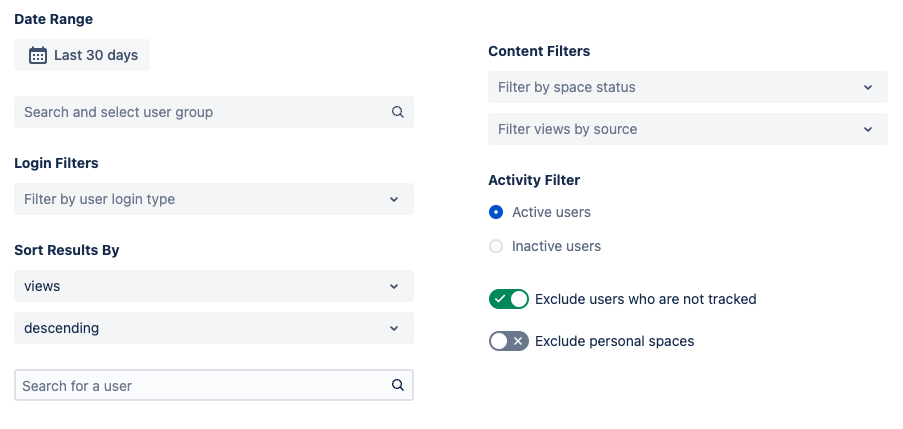
Form present within the Content & Usage Report: Users
Currently, the following settings are available:
Date Range
Define the required date range of the report.
Search for user group: Filter the report by specific user group.
Login Filters
Filter by user’s login type: Select “Logged in Users” or “Anonymous Users”
Sorting
Define by which data and in which order the report should be sorted.
Search for a user: If you want the report to consist only of content from a certain user, type their username here.
Content Filters
Filter by space status*: Select spaces that are currently active or archived (This filter is only available in the Global Report).
Filter views by source: Select to filter for Desktop, Mobile Web, Confluence App, JSM, Linchpin App or Scroll Viewport.
Activity Filter
Sort the report by currently active or inactive users.
Checkbox to exclude users that are members of user groups excluded from tracking
Checkbox to exclude personal spaces
Tap the “Apply” button once you have made your selection. Viewtracker will now generate the desired Content & Usage report.
📖 Read possible use cases for this report in our blog post on bitvoodoo.app.
Report generation
The loading time can vary depending on the defined date range and the number of tracked data on the Confluence instance.
The report data is collected in the background while you see a loading screen. If you don’t want to wait, you can leave this page and return to it later.
Once Viewtracker has collected and sorted the data, the following report will be displayed:

View of the Content & Usage Report: Users
The user’s avatar and name are linked to their profile page. When clicked, the profile opens in a new browser tab.
Tap the “Change Filters” button if you want to define a new date range, set other filters, or change the sort order. You will be directed back to the report creation form.
Hint when using the Content & Usage Report repetitively
There is a limit to the number of reports that can be created simultaneously. This is to avoid negatively impacting performance on Confluence instances with a lot of data.
If you see the message that the maximum number has been reached, try again later.
Scope of data
Users will appear in the table even if they have never made an interaction (view, edit, etc.) in the selected date range.
The filter for a user group only applies to the user's current membership in a group.
If a user moves from group A to group B, all historical views of the user will also move to group B.
An accurate historical analysis of usage by user groups is not possible, as users can leave groups, and thus, the usage figures change accordingly.
Members of user groups excluded from tracking will still appear in this report should the form not contain the checkbox “Exclude users who are not tracked.“
Excluded users will be represented with a cross
 above their profile picture and the addition “Excluded from tracking views”.
above their profile picture and the addition “Excluded from tracking views”. Their views are not counted. However, their other actions (creations, edits, etc.) still appear in the table. This is because these actions are publicly available to any user via the page history/page information.

Example of non-tracked users within the Content & Usage Report: Users.
Detailed User Interactions (Views, Creations, Edits, Comments, Likes, Watches)
You can find detailed information on the content a specific user has viewed, created, edited, commented on, liked or watched.
To access that data, tap on the three dots next to one of the columns: Views, Creations, Edits, Comments, Likes, or Watches.

An overlay will appear, displaying
The individual pages this user has viewed, created, edited, commented on, liked or watched (the metric depends on where in the table you had clicked) and the date and time of this interaction.
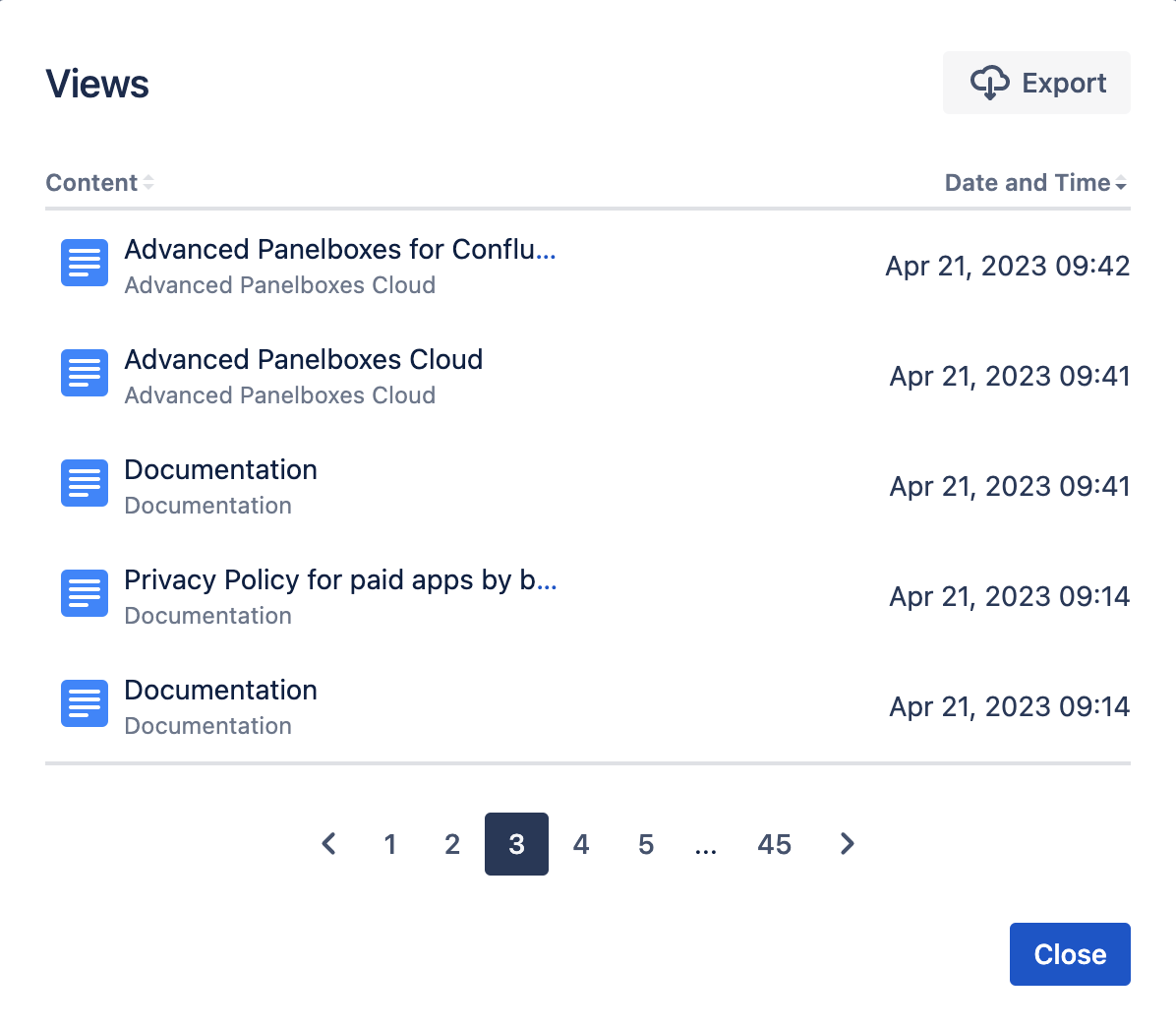
Page views of an individual user, sorted by date
Notes:
Tapping any content title will open the Content Report of that page or blog post in a new overlay.
By default, the list is sorted by Date and Time. Tap the “Content” heading to sort the list by content title.
The list of the individual interactions can be exported (see section “Export data” below).
Actions
Use the three dots in the “Actions” column to
access the user profile
manage the user
Depending on your permissions, you may not be allowed to carry out these actions.
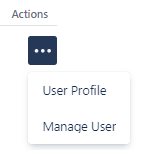
Screenshot of actions menu.
Summary
There is a summary below the table, which consists of:
Number of users: Total of all user accounts on the instance.
Views: Total view of all the listed users.
New Content: Number of all newly created pages and blog posts.
Edits: Number of edits that all the listed users generated.
Comments: Number of comments generated by all the listed users.
Likes: Number of likes (of content and comments combined) by all the users listed
Watches: Number of watched content by all the users listed

Summary found at the bottom of the Content & Usage Report: Users
Saving and sharing reports
Once you’ve applied a filter or changed the report's date range, the report’s URL will adapt with parameters like:
?dateValue=this.week&selectedGroup=412474eb.This is useful for the following reasons:
You can copy and share the URL with co-workers with the same access permission.
You can save the URL to access a customized report quickly.
Export data
All numbers in the export refer to the selected filter and date range (last 30 days by default).
You can export the report numbers as a CSV file.
Export the main table
Tap the “Export” button next to the date range.
Confirm the amount of data.
The CSV contains the aggregated data from the report, including the following:
Full Name, Views Total, Creates Total, Edits Total, Comments Total, Likes Total, Watches Total
Export the detailed user interactions (views, creations, edits, comments)
Tap the three dots in the “Views”, “Creations”, “Edits”, “Comments”, “Likes”, or “Watches” column next to a specific user.

Metrics available within the Content & Usage Report: Users
In the overlay, tap the “Export” button.
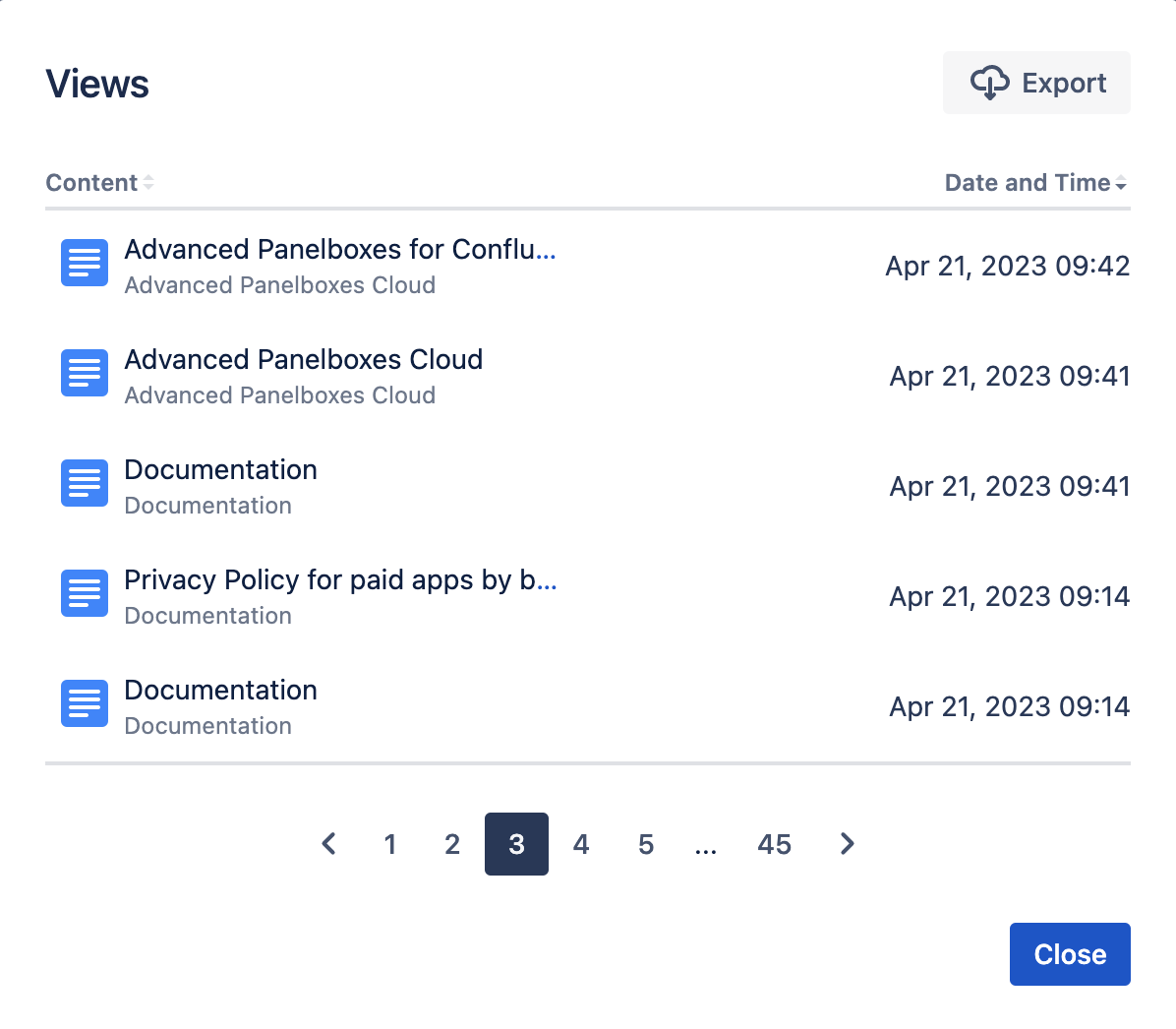
Example of the “Views” metric
Confirm the amount of data.
![]() The CSV contains the individual views, creations, edits, comments, likes and watches. It consists of "Content Title" and "Date and Time".
The CSV contains the individual views, creations, edits, comments, likes and watches. It consists of "Content Title" and "Date and Time".
